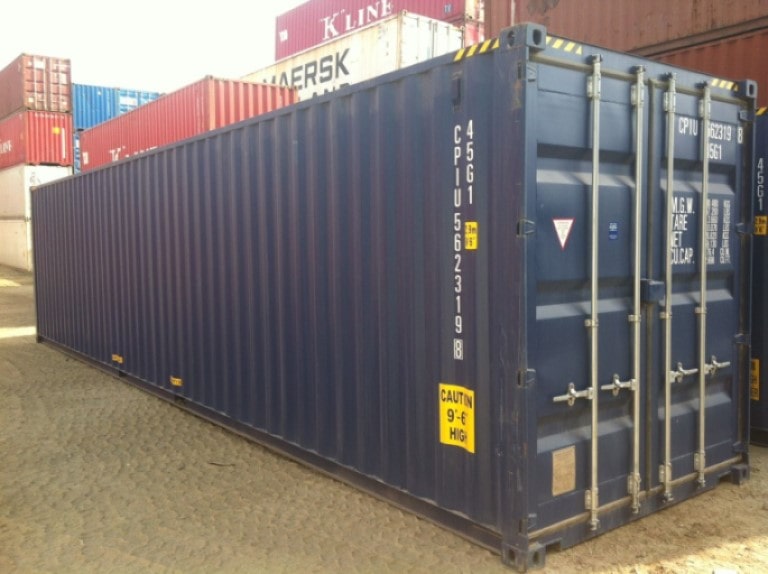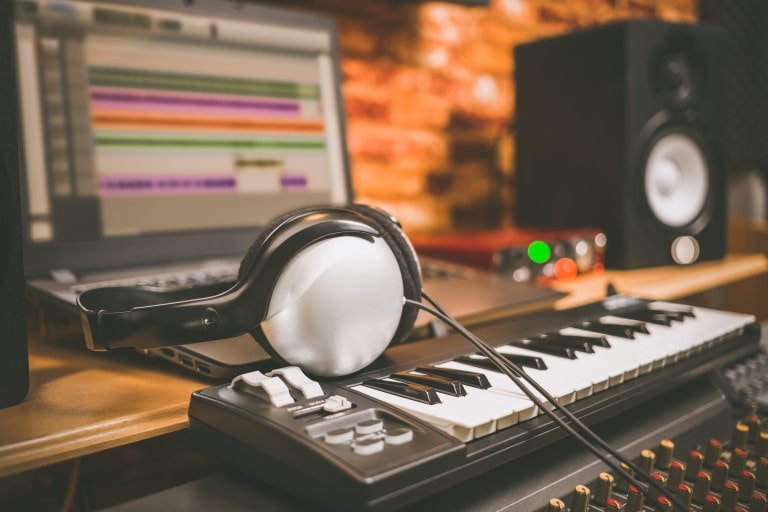Think of a shipping container as a blank canvas, and you’ll see how great it would work as a music studio. Whether you’re recording music, podcasts, voice-overs or foley effects, a shipping container recording studio is the most versatile solution today. Use this guide to learn about converting a shipping container into a studio.
What is a shipping container music studio?
A shipping container music studio is essentially an upcycled shipping container. It is a complete kit with everything you’d want in a recording studio, from sound-proofing to air conditioning, electrical wiring, and gear storage. Create a voice recording booth, a rehearsal space, and a post-production desk, all from a shipping container.
What are the benefits of a shipping container music studio?
Shipping containers make fantastic recording studios, and here’s why:
1. Portability
Imagine putting years of work into a music studio in your spare room, only to relocate to a new place suddenly. Instead of creating a new studio from scratch, a shipping container studio moves with you.
2. Great Acoustics
A shipping container is an enclosed space made from heavy-duty Corten steel. With the right sound-proofing, you’ll love how great your vocals and instruments will sound.
3. Extra Privacy
The great thing about sound engineering is that you can work from home. Unfortunately, this often means having your creative friends over and making a ruckus—which your spouse, partner and neighbours might not particularly enjoy. Build an utterly separate shipping container studio to accommodate your guests and concentrate on your work without going to and from the rest of the house.
4. Space-Saving
Sometimes that spare room in your house is simply too small for a proper sound studio, or maybe your family has grown, and you’re out of space. If you have a little space in your garden, add a 10ft or 20ft shipping container studio—problem solved!
5. Good Investment
While the initial cost of converting a shipping container into a studio may be a bit high, this is one investment that you’ll be happy to make. You’ll save years of studio rental fees and home studio renovations with a shipping container music studio.
How to find the perfect music studio shipping container

With all these perks and more, you’re itching to get your hands on a shipping container, right? Keep these tips in mind as you shop around for a music studio shipping container:
1. Size
Shipping containers come in three sizes: 10ft, 20ft, and 40ft. A 10ft shipping container is great for audio post-production since it comfortably fits your audio mixing console, plus speakers and a chair. Go for a 20ft container music studio to include a recording booth. A 40ft container is ideal for a full band setup or rehearsals, with equipment storage space to spare. If you’re short on ground space, stack up two 10ft containers for a two-storey recording studio.
2. Budget
A brand new shipping container will definitely be more expensive than a used one, but it looks incredible, it’s weather-tight and vermin-proof, and it will serve you for at least 15 years without other maintenance costs.
On the other hand, a used container will need a fresh coat of paint, plus an inspection to check for dents or gaps. Whichever you choose, your sound equipment will be safe from break-ins. The hardened steel body is incredibly difficult to cut, and so are the lockboxes that keep vandals and thieves out.
3. Shipping Container Supplier
Remember that a shipping container music studio is a significant investment, so you’ll want to deal with a company with a great reputation. Choose a company like Gateway Containers, which has great customer reviews, reasonable market rates, and all the modifications you’ll need for your shipping container studio.
How to make the most of your shipping container music studio
Your shipping container music studio needs a slightly different approach than a traditional studio with concrete or drywall surfaces. Here are some essential tips to make the most of your new recording space:
-
Location
Put your shipping container music studio in a quiet place with minor interruptions from cars, neighbours, animals or strong wind.
-
Flooring
Install hardwood or tile flooring in your container music studio. Carpets will wear out too fast, and they also absorb high frequencies, which may hurt your acoustics.
-
Ceiling
With a basic modification, you can increase the container’s ceiling height to make up for the narrow walls.
-
Monitors
In addition to your recording desktop or laptop, consider mounting a flat-screen on one of the walls as a visual aid for yourself and others.
-
Virtual instruments
If space for a full band is a challenge, use virtual instrument apps to compose music, then bring in the live instruments one by one.

How to sound-proof a shipping container
To keep sound vibrations at a minimum–you’re working in a metal box after all—sound-proofing your container studio is a critical part of your fabrication. You need to keep interior sounds inside, and exterior sounds out, so no raindrops or birds hopping on the roof.
So the best way is to sound-proof the four main parts of your container music studio:
-
Ceiling sound-proofing
Create a sturdy floating ceiling to prevent any roof vibrations from rain, birds and debris from reaching the recording space.
-
Corner sound-proofing
Use self-adhesive isolation strips in all the corners to eliminate noise from the container structure itself.
-
Door and window sound-proofing
Use double or triple glazed windows and fire doors that are already sound-proof rated to reduce noise pollution.
-
Floor and wall sound-proofing
Use a dense, thick rubber underlay that absorbs vibrations and airborne noises.
Studio layout considerations
The biggest factor in designing your container music studio layout is the number of people you’ll be recording in one go: Here are some setups to consider:
-
Solo setup
This is best for recording yourself or working on your own. Arrange your gear around yourself, but keep your laptop or desktop computer away from the mics to avoid picking up the fan noise.
-
Standard setup
This is the most common studio layout, with the mixing deck on one side and a recording booth on the other.
-
Hybrid setup
This works for both solo and multiple recording sessions. Use the standard configuration plus a remote recording app like a digital audio workstation (DAW). It gives you access to your recording software from inside the audio booth
All the other modifications will follow once you choose the basic studio setup. You’ll then see how to work in your power distribution system, cables and ports, lights and shelves to bring your studio together.
Examples of shipping container music studios
James Taylor Echo Chamber
James Taylor had several hits in the 1960s, and 70s, including You’ve Got a Friend, and sold over a million copies of every album he has produced since. He has recorded at all the top studios globally, including Abbey Road in London, famous for most of the Beatles and Pink Floyd’s albums.
James Taylor made a comeback in 2015 and has managed to hit the right note, with millions of people buying his latest music. Rather than using digital effects for reverb in his Before This World album, he used a shipping container for effect. Listen to him singing in the video above – it’s a country mile better than what a computer could do.
Bronte Holding – Spark 1 Studio
Spark 1 Studios offer “in your face” modern productions to “intimate acoustic performance”. Their reputation goes far and wide, with testimonials from Nashville producer Bob Montgomery, producer of Buddy Holly and Patsy Cline.
He said, “I have worked in Sparky’s mobile studio. Sounds great and is completely movable. The acoustics are as good and true as any of the many studios I’ve recorded in Nashville. “What you hear is what you get”—I’m sure you know how important that is.”
Boombox, Washington DC
This unit is built using two 45ft train containers welded together. It has two partitions, a 25ft studio and a 20ft garage. The studio itself has a length of windows that you can roll back so people outside can watch the musicians play their music.
While not fitted out for music recording, Boombox is sound-proofed, so those playing don’t have any issues with reverb or echo as you’d get from a naked container. It has become a popular location for locals to hang out and listen to their local musicians play while practising.
Build your dream recording studio with Gateway
Are you ready for your custom-built shipping container music studio? Get Gateway on your team. We’ll work with you to design the perfect shipping container studio to match your space, budget, and recording style. Get a quote today.




